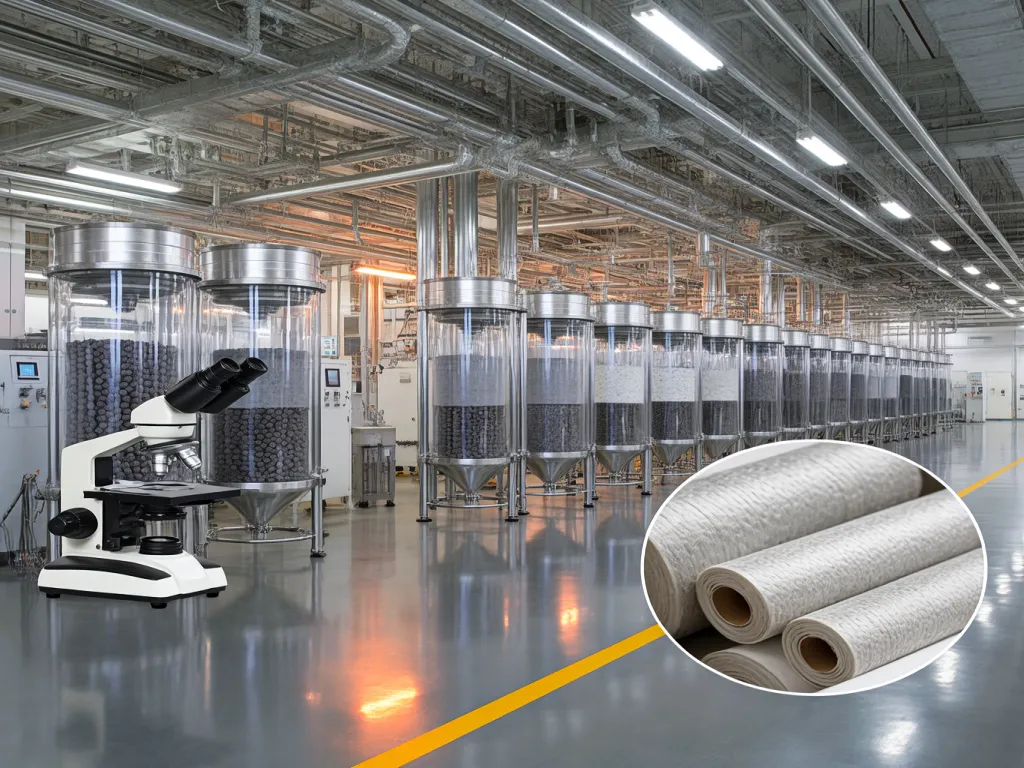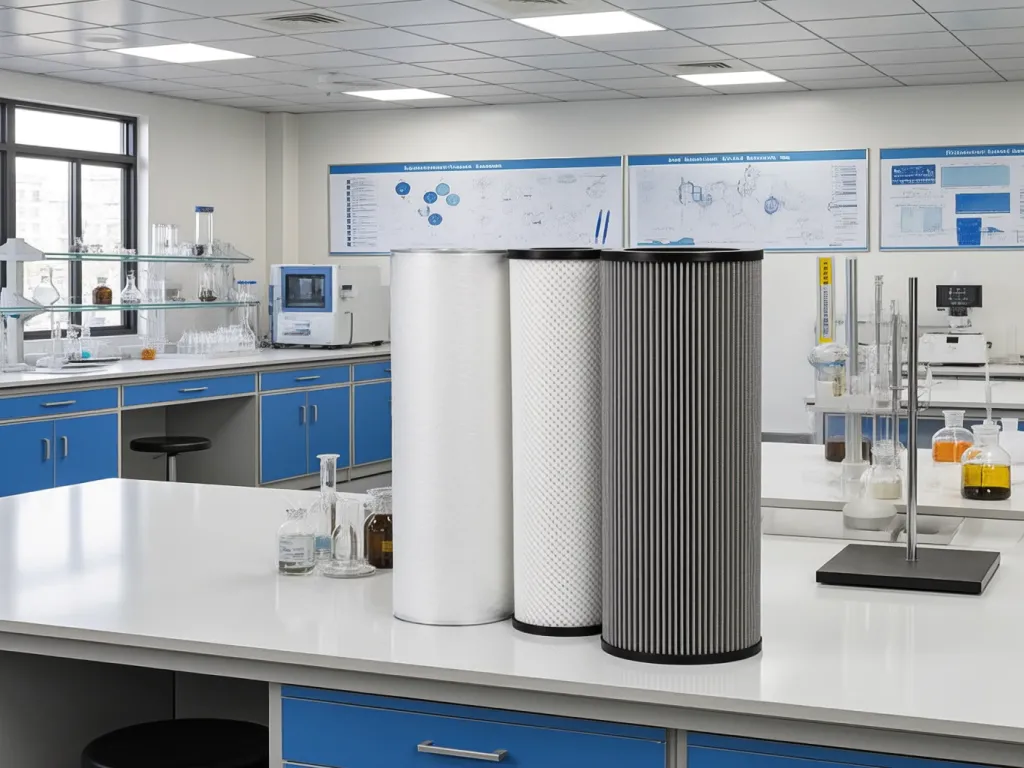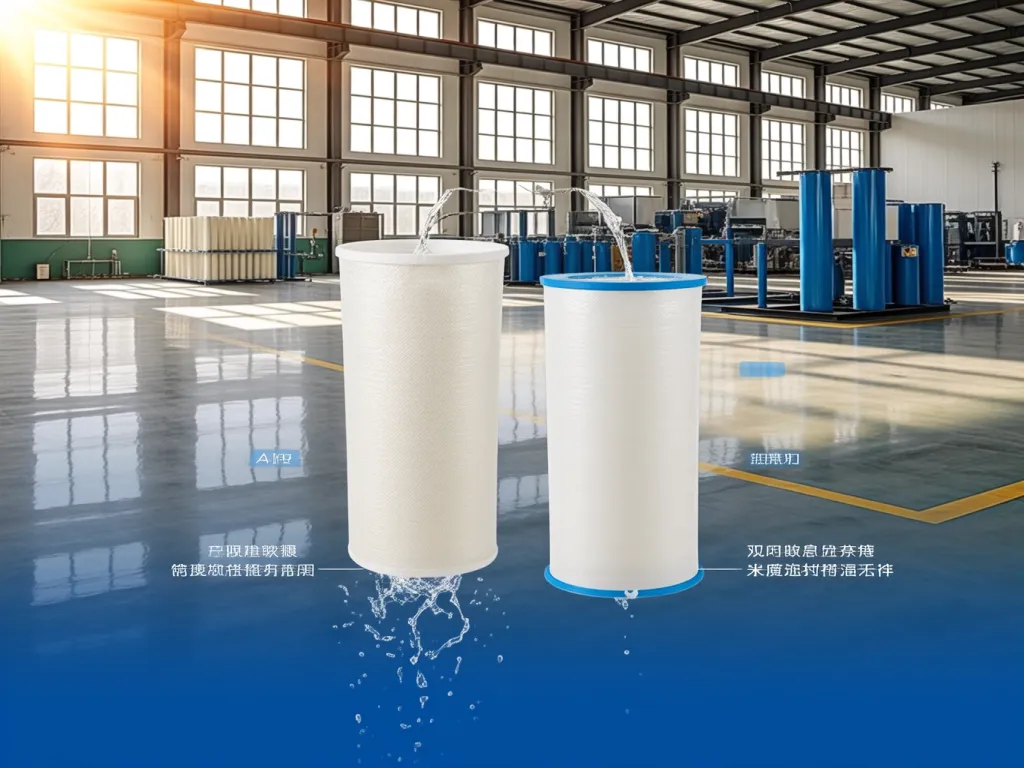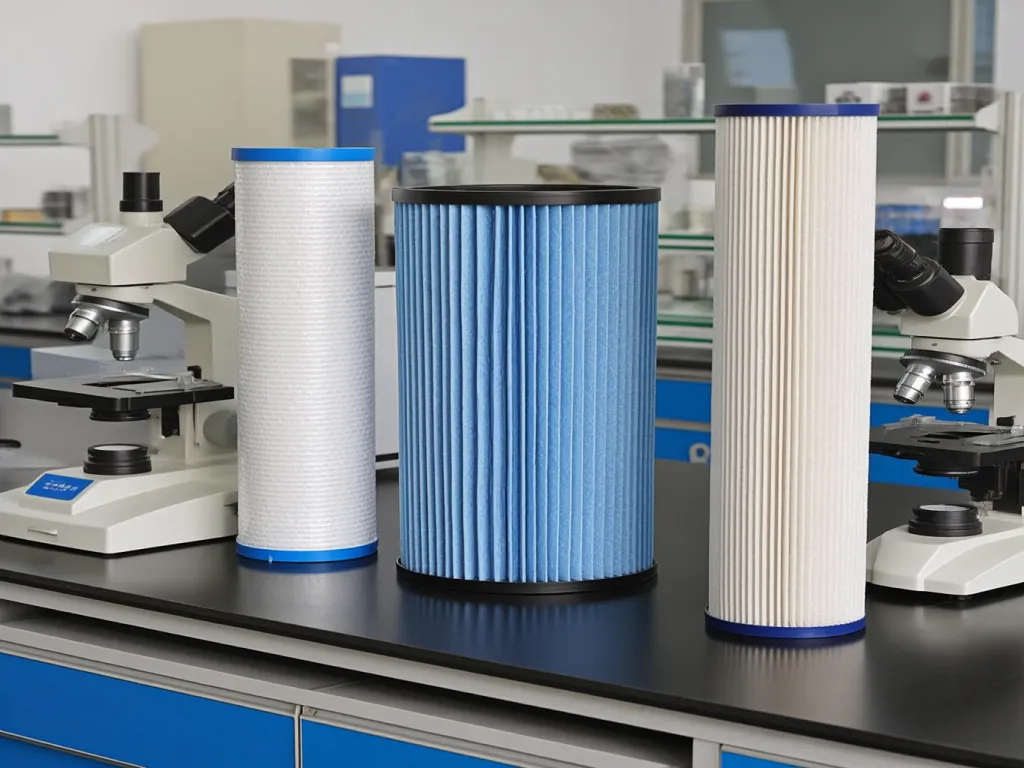Unveiling the Best Polyester Felt Filter Bag for Separation

In the realm of industrial filtration, selecting the right equipment is pivotal. When it comes to separation processes, the best polyester felt filter bag for separation stands out as a game-changer. But how do you determine which one truly fits your needs? From material composition to intricate design features, every detail matters. Dive into this comprehensive guide to uncover the secrets behind choosing the perfect filter bag for your industrial setup.

Material Differences Unveiled: Pure Polyester vs. Blended Polyester Felt Filter Bags
When it comes to selecting the best polyester felt filter bag for separation, understanding the nuances between different materials is crucial. Polyester felt filter bags come in various compositions, primarily pure polyester and blended polyester, each offering distinct advantages and limitations. Let’s dive into how these material differences impact chemical stability, temperature resistance, and ultimately, separation efficiency. For industrial applications seeking high-efficiency filtration solutions, these distinctions are particularly relevant.
Pure Polyester Felt Filter Bags: The Stalwart of Stability
Pure polyester felt filter bags are the go-to choice for many industrial applications due to their exceptional chemical stability. Polyester, as a synthetic fiber, exhibits high resistance to a wide range of chemicals, including most acids, alkalis, and organic solvents. This makes pure polyester bags ideal for environments where the filtered substances may contain corrosive elements. The chemical inertness of pure polyester ensures that the filter bag maintains its structural integrity and filtration performance over extended periods, even in harsh conditions.
In terms of temperature resistance, pure polyester felt filter bags can withstand continuous operating temperatures up to 130°C (266°F) and short-term peak temperatures of around 150°C (302°F). This thermal stability allows them to function effectively in high-temperature separation processes without degrading or losing their filtration efficiency. However, it’s essential to note that while polyester is heat-resistant, prolonged exposure to temperatures exceeding its limits can lead to material degradation, affecting both the bag’s lifespan and separation performance.
Blended Polyester Felt Filter Bags: Enhancing Performance Through Synergy
Blended polyester felt filter bags, on the other hand, incorporate additional fibers into the polyester matrix to enhance specific properties. Common blending materials include polypropylene, glass fibers, or even aramid fibers, each bringing unique benefits to the table.
For instance, blending polyester with polypropylene can improve the bag’s resistance to moisture and enhance its dimensional stability. This makes blended bags suitable for applications involving humid environments or where the filter bag needs to maintain its shape under varying pressure conditions. Additionally, the incorporation of glass fibers can significantly boost the bag’s temperature resistance, allowing it to operate at higher temperatures than pure polyester bags, sometimes up to 200°C (392°F) or more, depending on the blend ratio.
Aramid fiber blends, known for their exceptional strength and heat resistance, are often used in applications requiring extreme durability and high-temperature performance. These blended bags can withstand aggressive chemical environments and high temperatures, making them ideal for industries like cement production, metal processing, and waste incineration. For those exploring high-efficiency industrial separation materials, these blends offer tailored solutions.
Impact on Separation Efficiency: A Balancing Act
The choice between pure polyester and blended polyester felt filter bags hinges on understanding how each material’s characteristics influence separation efficiency. Pure polyester bags excel in environments where chemical stability is paramount, ensuring consistent filtration performance over time. Their moderate temperature resistance makes them suitable for a wide range of industrial applications without the need for specialized high-temperature handling.
Blended polyester bags, with their enhanced properties, offer tailored solutions for specific challenges. Whether it’s improved moisture resistance, higher temperature tolerance, or increased strength, blending allows for customization that can significantly boost separation efficiency in demanding scenarios. For example, in high-temperature dust collection systems, a glass fiber-blended polyester bag can maintain its structural integrity and filtration performance where a pure polyester bag might fail.
However, it’s essential to strike a balance. While blending can enhance certain properties, it may also introduce trade-offs. For instance, adding glass fibers can increase the bag’s brittleness, potentially reducing its lifespan under mechanical stress. Similarly, aramid blends, while incredibly strong, can be more expensive, impacting the overall cost-effectiveness of the filtration system.
In conclusion, when selecting the best polyester felt filter bag for separation, consider the specific demands of your application. Pure polyester bags offer a reliable, cost-effective solution for most industrial filtration needs, providing excellent chemical stability and moderate temperature resistance. Blended polyester bags, with their customized properties, cater to more specialized requirements, enhancing separation efficiency in challenging environments. By carefully evaluating the material differences and their impact on performance, you can make an informed decision that optimizes your filtration system’s effectiveness and longevity.
Chemical Stability: Pure Polyester’s Edge
Pure polyester felt filter bags shine in their chemical stability. They resist degradation from a broad spectrum of chemicals, making them ideal for industries like chemical processing, pharmaceuticals, and food and beverage production. This resistance ensures that the filter bag maintains its integrity, preventing contamination and ensuring consistent separation performance. For instance, in a chemical plant where acidic or alkaline substances are prevalent, a pure polyester bag will outlast and outperform many other materials, reducing downtime and maintenance costs.
Temperature Resistance: Blended Polyester’s Strength
Blended polyester felt filter bags excel in temperature resistance, particularly when blended with materials like glass fibers or aramid. These blends can operate at significantly higher temperatures than pure polyester, making them suitable for high-temperature applications such as metal smelting, cement production, and power generation. The enhanced temperature tolerance ensures that the filter bag remains effective even in extreme heat, preventing premature failure and maintaining separation efficiency. For example, in a cement kiln, where temperatures can soar, a glass fiber-blended polyester bag will withstand the heat, ensuring continuous and efficient dust collection. For more insights on industrial separation solutions, explore our product range.
Balancing Act: Cost vs. Performance
While blended polyester bags offer superior properties in certain scenarios, they often come at a higher cost. The addition of specialized fibers like glass or aramid increases the material’s price, impacting the overall budget. Therefore, it’s crucial to weigh the benefits against the costs. For applications where standard temperature and chemical resistance suffice, a pure polyester bag may offer the best value. Conversely, in environments demanding extreme performance, investing in a blended bag can pay off in terms of reduced downtime, longer lifespan, and enhanced separation efficiency. For those seeking high-efficiency industrial filtration solutions, this balance is key.

Thickness and Separation Efficiency: Exploring the Impact of Filter Bag Thickness on Filtration Resistance, Dust Holding Capacity, and Separation Precision
When it comes to choosing the best polyester felt filter bag for separation, thickness is a factor that can’t be overlooked. It’s not just about how thick or thin the bag looks; it’s about how that thickness directly influences the overall performance of your filtration system. Let’s dive into the nitty – gritty of how filter bag thickness affects filtration resistance, dust holding capacity, and separation precision.
Filtration Resistance
First, let’s talk about filtration resistance. Imagine trying to push water through a straw. A narrow straw offers more resistance than a wide one. Similarly, a thicker polyester felt filter bag creates more resistance to the flow of the fluid being filtered. This is because the thicker the bag, the more layers the fluid has to pass through. As a result, the pressure drop across the filter bag increases. For instance, in a high – volume industrial setting where a large amount of fluid needs to be filtered quickly, a very thick filter bag might slow down the process significantly. On the other hand, a thinner bag allows for a smoother flow, reducing the energy required to push the fluid through and thus lowering operational costs in the long run.
Dust Holding Capacity
Now, onto dust holding capacity. This is where a thicker filter bag can really shine. A thicker bag has more surface area and volume to trap dust and other particulates. Think of it like a sponge; a thicker sponge can soak up more liquid. In an environment with a high concentration of dust, such as a cement factory or a woodworking shop, a thicker polyester felt filter bag can hold a larger amount of dust before it needs to be cleaned or replaced. This means fewer interruptions in the filtration process and less maintenance overall. For example, a factory that produces a large amount of fine dust might find that a thicker filter bag can operate for weeks without needing attention, while a thinner one might require daily cleaning.
Separation Precision
Separation precision is another crucial aspect affected by filter bag thickness. A thinner filter bag generally has smaller pores, which can lead to higher separation precision. It can capture finer particles that a thicker bag might let through. However, this comes at a cost. The smaller pores in a thinner bag also mean higher filtration resistance. So, if your separation needs require capturing extremely fine particles, like in the pharmaceutical industry where purity is paramount, a thinner bag might be the way to go. But if you’re dealing with larger particles and want to balance separation precision with lower resistance, a moderately thick bag could be a better choice.
Real – World Examples
Let’s look at some real – world examples. In a power plant, where the goal is to remove large ash particles from the flue gas, a thicker polyester felt filter bag is often used. The high dust loading in the flue gas requires a bag with a large dust holding capacity. The thicker bag can handle the volume of ash without clogging up too quickly. On the other hand, in a semiconductor manufacturing facility, where even the tiniest of particles can contaminate the delicate chips, a thinner filter bag with high separation precision is essential. The thin bag can capture those minuscule particles, ensuring the purity of the manufacturing environment.
Choosing the Right Thickness
So, how do you choose the right thickness for your separation needs? It all boils down to understanding your specific requirements. If you have a high – dust – volume application and can tolerate a bit more filtration resistance, go for a thicker bag. If you need to capture fine particles and prioritize separation precision over dust holding capacity, a thinner bag is your best bet. And if you’re somewhere in the middle, a moderately thick bag can offer a good balance between the two.

Fiber Density’s Impact on Separation Performance: Analyzing How Fiber Density Affects Porosity, Air Permeability, and Filtration Efficiency
When it comes to choosing the best polyester felt filter bag for separation, fiber density is a factor that can’t be overlooked. It plays a pivotal role in determining the overall performance of the filter bag. So, how exactly does fiber density influence the key aspects of separation? Let’s dive in.
Firstly, let’s talk about porosity. Porosity refers to the percentage of void space within the filter bag material. A higher fiber density means that the fibers are packed more closely together. This results in a lower porosity. At first glance, you might think that lower porosity is a bad thing. After all, we want the filter bag to allow fluids to pass through, right? Well, it’s not that simple. A lower porosity can actually be beneficial in some separation scenarios. For instance, when dealing with fine particles, a filter bag with lower porosity can effectively trap these tiny impurities, preventing them from passing through with the filtered fluid. This leads to a higher purity of the separated product. On the other hand, a lower fiber density would mean higher porosity. While this allows for greater fluid flow, it might not be suitable for applications where fine particle separation is crucial. So, depending on your specific separation needs, you need to strike a balance between porosity and fiber density. If you’re separating large, coarse particles, a higher porosity (lower fiber density) filter bag might work well. But for fine particle separation, a higher fiber density (lower porosity) bag is the way to go.
Now, let’s move on to air permeability. Air permeability is a measure of how easily air can pass through the filter bag. It’s directly related to fiber density. A high fiber density filter bag will have lower air permeability. This is because the closely packed fibers create more resistance to the flow of air. In industrial separation processes, especially those involving gases, air permeability is a critical factor. If the air permeability is too low, it can lead to increased pressure drops across the filter bag, putting more strain on the filtration system. This, in turn, can increase energy consumption and operational costs. However, a lower air permeability isn’t always a drawback. In situations where you want to slow down the flow of the fluid (whether it’s air or a liquid) through the filter bag, a high fiber density can be advantageous. For example, in some chemical separation processes, a slower flow rate allows for better interaction between the fluid and the filtering medium, leading to more efficient separation. So, when choosing a filter bag based on air permeability, consider the flow rate requirements of your separation process.
Finally, let’s discuss filtration efficiency. Filtration efficiency is the ability of the filter bag to remove contaminants from the fluid being filtered. Fiber density has a significant impact on this. A high fiber density filter bag generally offers higher filtration efficiency. The closely packed fibers create a more complex network of pathways for the fluid to pass through. As the fluid moves through these pathways, contaminants are more likely to get trapped, resulting in a cleaner separated product. But here’s the catch: higher filtration efficiency often comes at the cost of increased pressure drop and reduced flow rate. So, you need to find the right balance. If your separation process requires extremely high purity of the separated product, a high fiber density filter bag with high filtration efficiency might be worth the trade – off in terms of pressure drop. On the other hand, if you can tolerate a slightly lower purity level in exchange for a higher flow rate and lower pressure drop, a lower fiber density filter bag could be a better choice. For those seeking a balance, consider exploring our high-efficiency industrial separation solutions.
So, how do you choose a high – fiber – density filter bag to boost separation performance? First, assess your separation needs. Determine the size and type of particles you need to separate. If fine particles are involved, a high fiber density bag is a must. Second, consider the flow rate requirements of your system. If a slower flow rate is acceptable or even beneficial, a high fiber density bag can work well. Third, factor in the pressure drop limitations of your filtration system. Make sure the high fiber density bag you choose doesn’t cause excessive pressure drops that could strain your system. Lastly, look for reputable manufacturers that offer high – quality polyester felt filter bags with consistent fiber density. For a reliable option, you can check our high-efficiency material for industrial separation. Check product specifications and customer reviews to ensure you’re getting a reliable product.
To wrap up, the journey to finding the best polyester felt filter bag for separation is a nuanced one, shaped by material quality, thickness, and fiber density. By now, you should have a clearer picture of what to look for to enhance your industrial separation processes. Remember, the right choice can significantly boost your system’s efficiency and product quality. So, why wait? Take the leap and upgrade your filtration system today. And if you’re eager to delve deeper into the world of industrial filtration, keep exploring—there’s always more to learn!

